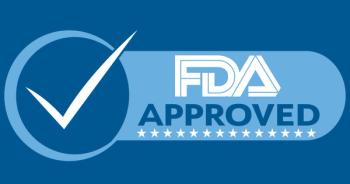
AAAAI Annual Meeting: What to do before a telehealth appointment
Mike Tankersley, MD, MBA, discusses workflow tips that can help practices in their use of telehealth visits.
As the COVID-19 coronavirus pandemic continues to rage, more and more practices have turned to telehealth to continue caring for patients.
Mike Tankersley, MD, MBA, of the University of Tennessee, gave some tips of how to prepare for a telehealth visit to cut down on confusion and stress for the patient and your staff as part of the session “Expanding Your Practice: Clinical, Administrative and Reimbursement Strategies for Success,” on Feb. 26 as part of the digital American Academy of Allergy Asthma & Immunology (AAAAI) Annual Meeting.
The ideal patient for a telehealth visit is returning patient, particularly for a follow up visit. For this patient, the physician should discuss with that patient at the end of their visit whether the follow up or next visit should be in-person or held using telehealth. Tankersley says he then lets the front office staff know and the next visit is booked as taking place over telehealth.
When it comes to using telehealth with a new patient, Tankersley notes that it’s best used when dealing with patients who are distant from the practice or if a patient would normally have to cancel their appointment due to unforeseen circumstances such as the severe weather that affected much of the country at the end of February.
“I'm in the city of Memphis, but if I want to set up a satellite clinic in Jackson, Tenn., an hour and 15 minutes away, I don't have to rent out space into a brick-and-mortar space,” he said. “I basically can set up a virtual satellite clinic and see patients who were there that don't have to drive the hour and 15 minutes to my office in Memphis.”
In preparation for upcoming telehealth visits, Tankersley says that every Friday at his practice they look over the next week’s schedule and send out templated emails to patients scheduled for telehealth visits which contain the time of the appointment and a link. He recommends the first or last appointment of the day for solo physicians.
Tankersly also has his staff collect any payment for the appointment beforehand. With patients he has already seen, he has them collect payment at the time they schedule the telehealth appointment, with new patients he has them call the patient the morning of the appointment to collect payment.
Another tip Tankersley gave was to create a mechanism so that the appointment starts on time in order to keep patients from being left staring at a computer screen waiting.
“Whether you set a timer, you got somebody in your office that's designated to kind of remind you, hey, Dr. Tankersley, your telemedicine’s in five minutes; just have some mechanism to remind yourself that that your telemedicine is live because the patient's not going to be in your clinic, letting everybody know that they’re there,” he said.
Newsletter
Get the latest clinical updates, case studies, and expert commentary in obstetric and gynecologic care. Sign up now to stay informed.










